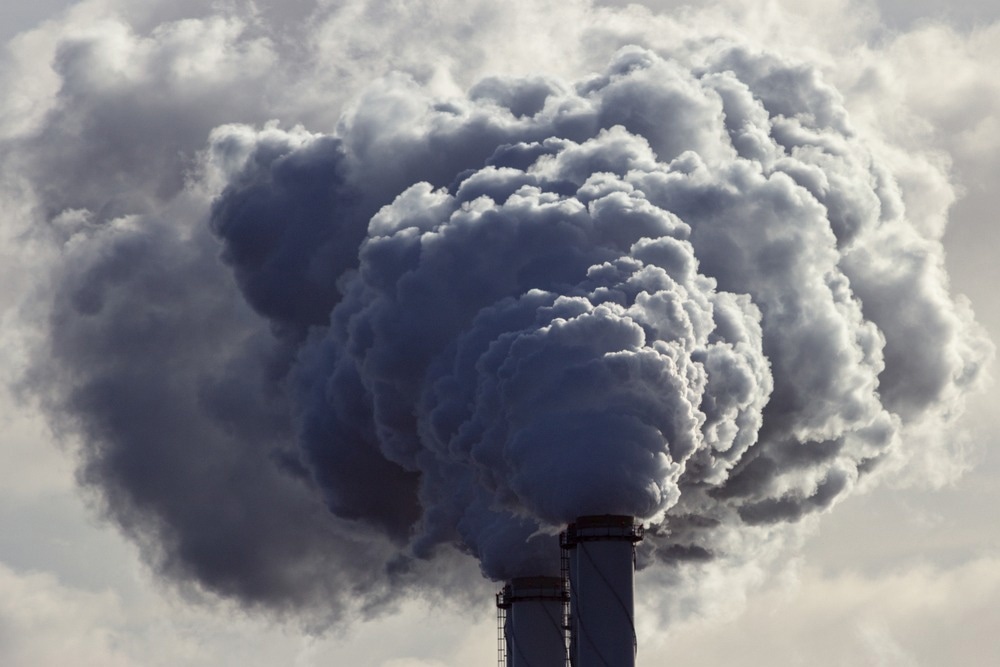Reduced levels of harmful air pollution may aid in reducing antibiotic resistance, according to the first in-depth global analysis of possible links between the two. The study was published in The Lancet Planetary Health journal.

Image Credit: VanderWolf Images//Shutterstock.com
According to the study’s findings, controlling air pollution could significantly reduce the deaths and economic costs associated with antibiotic-resistant infections.
Increased air pollution may be associated with a higher risk of antibiotic resistance across global regions. It also suggests that the relationship between the two has grown stronger over time, with a recent spike in air pollution correlating with increases in antibiotic resistance.
There is limited quantitative information on the various pathways by which antibiotic-resistant genes are spread via air pollution, even though air is widely acknowledged as a direct pathway and important vector for the spread of antibiotic resistance. Hospitals, farms, and sewage-treatment facilities are a few examples of potential pathways because they release and spread antibiotic-resistant particles into the air and over long distances.
Antibiotic resistance and air pollution are each in their own right among the greatest threats to global health. Until now, we didn’t have a clear picture of the possible links between the two, but this work suggests the benefits of controlling air pollution could be two-fold: not only will it reduce the harmful effects of poor air quality, it could also play a major role in combatting the rise and spread of antibiotic-resistant bacteria.
Hong Chen, Study Lead Author and Professor, Zhejiang University
Antibiotic misuse and overuse are the primary causes of antibiotic resistance. Still, research indicates air pollution also plays a role in the spread of bacteria that are resistant to antibiotics and resistance genes. However, until now, there has been little information on the global impact of PM2.5 air pollution, which is composed of particles 30 times smaller than the width of a human hair.
Transportation by road, industrial processes, and domestic coal and wood burning are all sources of PM2.5. According to recent research, 7.3 billion people worldwide, with 80% residing in low- and middle-income countries, are exposed directly to unsafe annual average PM2.5 levels.
Using data from 116 countries from 2000 to 2018, the authors created a large dataset to investigate whether PM2.5 is a key factor boosting global antibiotic resistance. The study included data on more than 11.5 million test isolates from nine bacterial pathogens and 43 antibiotics.
Antibiotic usage, sanitation services, economics, health spending, population, education, climate, and air pollution data were used to investigate the impact of these factors on antibiotic resistance levels. Surveillance databases, the World Health Organization, the European Environment Agency, and the World Bank were among the data sources used.
According to the findings, antibiotic resistance rises with PM2.5, with every 1% increase in air pollution linked to increases in antibiotic resistance ranging from 0.5 to 1.9%, depending on the pathogen. The link has grown stronger over time, with changes in PM2.5 levels causing larger increases in antibiotic resistance in recent years.
Antibiotic resistance is highest in North Africa, the Middle East, and South Asia, while it is lowest in Europe and North America. Because of their large populations, China and India are assumed to be the countries where changes in PM2.5 have the greatest impact on the number of people who die prematurely due to antibiotic resistance.
According to the study, antibiotic resistance caused by air pollution caused an estimated 480,000 premature deaths in 2018. This resulted in an additional $395 billion in economic costs.
According to the study, PM2.5 is one of the leading causes of antibiotic resistance, accounting for 11% of changes in global average resistance levels. In comparison, health spending accounts for 10% of change, while drinking water services account for 3%. PM2.5 has the largest impact on antibiotic resistance in North Africa and Western Asia, accounting for 19% of changes in resistance levels.
According to the authors’ modeling of possible future scenarios, if current air pollution policies remain unchanged, antibiotic resistance levels worldwide could increase by 17% by 2050. The annual premature death toll due to antibiotic resistance might rise to around 840,000, with Sub-Saharan Africa experiencing the greatest increases.
Antibiotic resistance could be reduced significantly in other scenarios, like growing health spending, governing air pollution, improving drinking water, and reducing antibiotic use. Implementing a World Health Organization-recommended policy of limiting PM2.5 to μg/m3 in the atmosphere, for example, could reduce global antibiotic resistance by 17% by 2050. This policy could result in a 23% reduction in antibiotic-related deaths (630,000 fewer deaths).
The researchers asserted that their study had some limitations. A lack of data in some countries, especially low- and middle-income countries that are heavily impacted by antibiotic resistance, may affect the overall analysis. Comparing results across countries should be done with caution as well, due to differences in relative risks and testing availability.
The actual mechanism of how air pollutants and other factors affect antibiotic resistance, as well as potential interactions between different factors, should be a vital focus of future research.